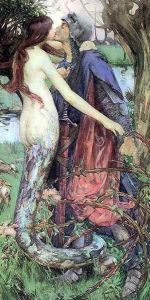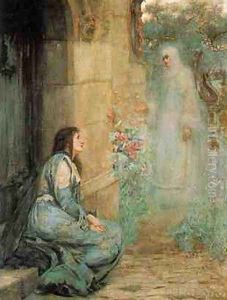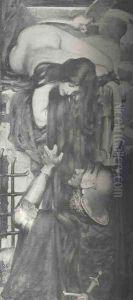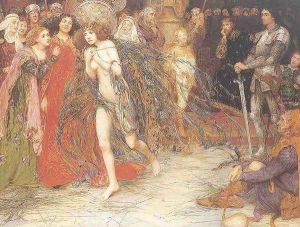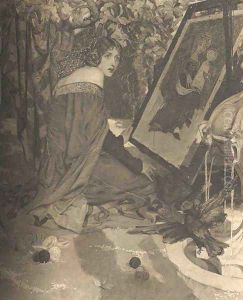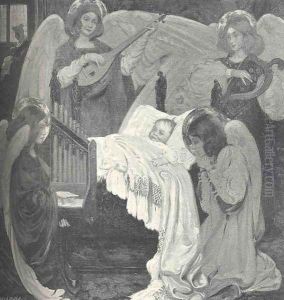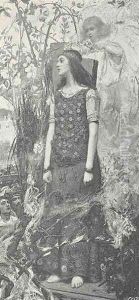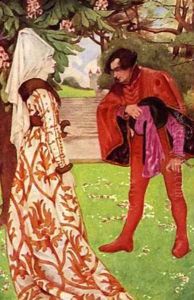Isobel Lilian Gloag Paintings
Isobel Lilian Gloag was a British painter, born in 1865 in Kensington, London. She grew up in an artistic environment; her father, William Gloag, was a landscape painter, and her brother, William Gloag, became a well-known lawyer and writer. As a woman in the Victorian era, her opportunities for formal training were limited compared to her male counterparts, but she managed to study at the South Kensington Art School, now known as the Royal College of Art.
Gloag's work was often characterized by its rich, vivid colors and a distinct style that blended elements of the Pre-Raphaelites with Symbolism. She painted a variety of subjects including portraits, mythological scenes, and even some early feminist pieces. Her works demonstrated a keen interest in narrative and often contained a strong emotional or allegorical component.
One of Gloag's most famous paintings is 'The Magic Crystal' (also known as 'The Witch's Crystal'), which depicts a witch gazing into a crystal ball. This work illustrates her fascination with mystical and supernatural themes, which were popular among many artists and writers during the late 19th and early 20th centuries. Despite her talent, Gloag did not achieve the same level of fame as some of her contemporaries, possibly due to the constraints placed on women in the art world at the time.
Isobel Lilian Gloag's career was cut short by her death in 1917, at the age of 52. While she did not live to see the significant changes in the status of women that the 20th century would bring, her work remains a testament to her skills and artistic vision. Today, her paintings can be found in various art collections, and she is remembered as a noteworthy figure among female artists of the Victorian and Edwardian periods.
